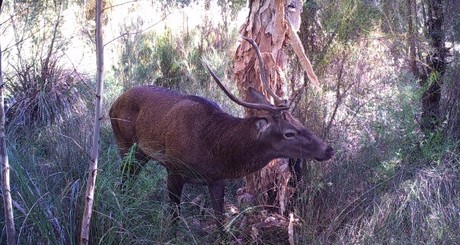Doe, a deer, a feral deer

Seeking to tackle the escalating threat of feral deer, the Centre for Invasive Species Solutions has brought together five state and territory governments, three local councils, three universities and three private environmental groups to form Australia’s largest deer management research collaboration.
Worth a combined investment of $8.7 million, including $3.2 million of direct funding from the Department of Agriculture and Water Resources, the collaboration will work on four projects to develop best practice management feral deer toolkits and better understand the role of feral deer in the transmission of disease to livestock, including foot and mouth disease. One project will look at developing management strategies for feral deer in peri-urban areas, recognising that feral deer are not just a rural problem.
Andreas Glanznig, CEO of the Centre for Invasive Species Solutions, said that the large-scale collaboration was formed off the back of a National Workshop on Deer Management held in late 2016.
“The workshop identified a number of knowledge and innovation priorities that must be addressed to more effectively manage this emerging national issue,” Glanznig said.
“This collaboration underscores the important role of the centre in fostering nationally coordinated approaches to developing better solutions for invasive species problems.”

The collaboration has the support of farmer Danny Picker, President of the Australian Superfine Wool Growers’ Association, who noted, “There are six known species of feral deer in Australia, and all states and territories have at least one of these species — it truly is a national issue, which requires this national collaboration to find the answers.
“We are hearing more and more of the damage deer are doing to our agricultural sector and the environment, not just in rural areas but in urban areas too.
“Through this collaboration, we have a real chance to tackle feral deer before they do any more significant damage and the problem becomes out of control.”
The four strategic deer projects have now started. Over the coming years the centre will provide land managers with the research outcomes which will enhance best practice management of feral deer in Australia.
For more information, visit www.invasives.com.au.
Why are young plants more vulnerable to disease?
Fighting disease at a young age often comes at a steep cost to plants' growth and future...
Liquid catalyst could transform chemical manufacturing
A major breakthrough in liquid catalysis is transforming how essential products are made, making...
How light helps plants survive in harsh environments
Researchers from National Taiwan University have uncovered how light stabilises a key...




